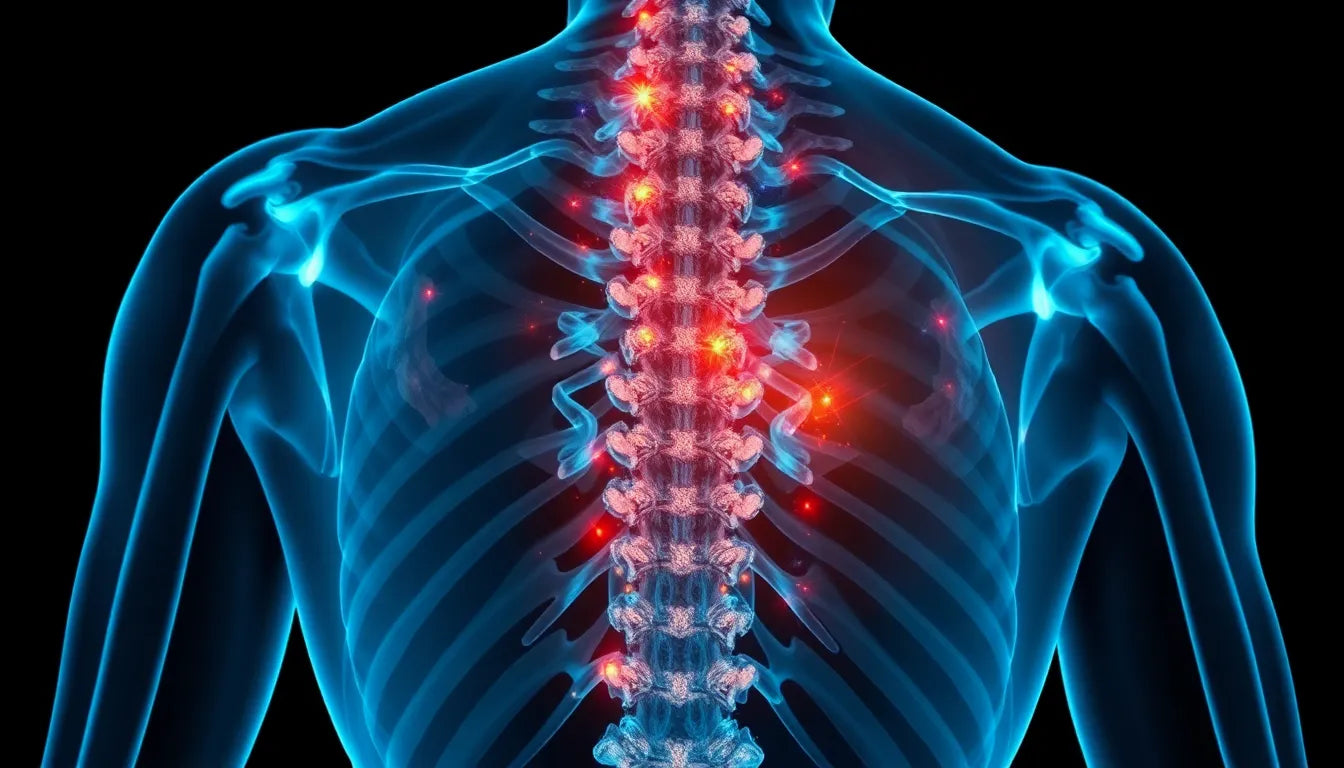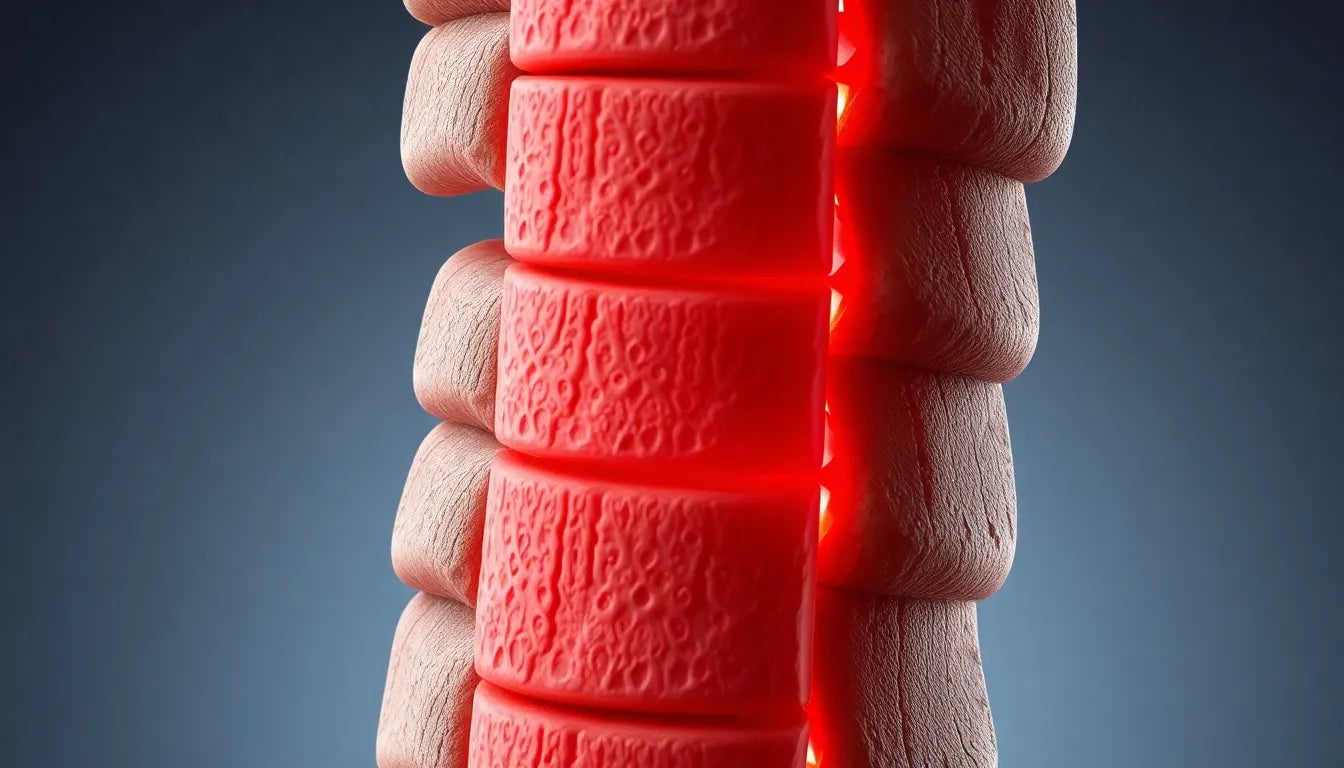Lower back pain is a common ailment that affects millions of people worldwide, often disrupting daily life and reducing overall quality of living. Whether it's a dull ache or a sharp, debilitating pain, the impact on one's ability to perform routine tasks cannot be understated. Among the myriad of causes for lower back pain, a herniated disc stands out as a frequent culprit, yet it often goes undiagnosed due to the complexity of its symptoms.
Understanding herniated discs
A herniated disc, sometimes referred to as a slipped or ruptured disc, occurs when the soft inner gel of the disc protrudes through a tear in the tougher outer layer. This condition predominantly affects the lumbar region, or lower back, which bears much of the body's weight and absorbs the stress of movement. When a disc herniates in this area, it can lead to significant discomfort and a range of symptoms that may vary from person to person.
Recognizing the symptoms of a herniated disc in the lower back is crucial for effective management and prevention of further complications. Early identification allows for timely intervention, which can alleviate pain and enhance mobility. The symptoms can be insidious, often starting as mild discomfort and gradually escalating to more severe manifestations. Common signs include intermittent or continuous back pain, sciatica, and muscle weakness, among others.
Understanding these symptoms not only aids in seeking appropriate medical care but also empowers individuals to take proactive steps in their recovery journey. By recognizing the hidden signs of a herniated disc, those affected can explore treatment options that may include physical therapy, lifestyle modifications, and in some cases, surgical intervention. As we delve deeper into the specific symptoms and their implications, it becomes clear why addressing a herniated disc promptly is essential for maintaining a healthy, active lifestyle.
Detailed symptom overview of herniated disc in the lower back
A herniated disc in the lower back manifests through a variety of symptoms that can significantly affect daily life. One of the primary indicators is intermittent or continuous back pain. This pain can vary in intensity, ranging from a mild, nagging discomfort to severe, debilitating pain that can impede movement and activity. The pain often intensifies with certain movements, such as bending or twisting, and can be exacerbated by prolonged sitting or standing.
Another hallmark symptom is sciatica, which occurs when the herniated disc compresses the sciatic nerve. This results in a sharp, radiating pain that travels from the lower back down through the buttock and into the leg, sometimes reaching the foot. Sciatica can also be accompanied by a burning sensation or a feeling of pins and needles along the affected nerve pathway.
Muscle weakness and spasms are additional symptoms that can arise from a herniated disc. The compression of nerves can lead to muscle weakness in the legs, affecting balance and mobility. Muscle spasms, on the other hand, are involuntary contractions that can cause sudden, intense pain and further restrict movement.
Many individuals also experience numbness or tingling in the leg or foot. This sensory change is due to nerve irritation and can range from a mild tingling sensation to complete numbness in the affected area. These symptoms can disrupt normal activities and decrease the overall quality of life.
Additional symptoms to watch for
While less common, some individuals with a herniated disc may experience decreased reflexes. This occurs when nerve compression affects the body's reflex responses, particularly in the legs. A decrease in reflexes can indicate significant nerve involvement and may require medical evaluation.
In rare cases, a herniated disc can lead to changes in bladder or bowel function. This can manifest as urinary incontinence, difficulty urinating, or bowel control issues. These symptoms are serious and warrant immediate medical attention, as they may indicate a condition known as cauda equina syndrome, which requires urgent treatment.
Comparative analysis of symptoms
Understanding the symptoms of a herniated disc is crucial for distinguishing it from other common lower back issues. The following table provides a comparative analysis:
| Symptom | Herniated Disc | Muscle Strain | Arthritis |
|---|---|---|---|
| Back Pain | Intermittent or continuous | Localized, often acute | Chronic, stiffness |
| Sciatica | Common, radiating pain | Rare | Possible, but less common |
| Muscle Weakness | Possible in legs | Uncommon | Possible, usually mild |
| Numbness/Tingling | Common, in leg/foot | Rare | Possible, but less common |
| Reflex Changes | Possible, in legs | Uncommon | Possible, but less common |
| Bladder/Bowel Changes | Rare, serious | Rare | Rare |
Recognizing these symptoms and understanding their implications is essential for seeking appropriate medical care and choosing the right treatment path. By identifying the signs early, individuals can better manage their condition and maintain an active, healthy lifestyle.
Diagnostic and treatment options for herniated discs
When it comes to diagnosing a herniated disc in the lower back, medical professionals typically rely on a combination of physical examinations, neurological tests, and imaging studies. During a physical exam, the doctor will assess your range of motion, reflexes, and muscle strength. Neurological tests may be conducted to evaluate nerve function and identify any sensory or motor deficits.
Imaging studies, such as MRI or CT scans, play a crucial role in confirming the diagnosis. These advanced imaging techniques provide detailed images of the spine, allowing healthcare providers to visualize the herniated disc and assess its impact on surrounding nerves and tissues. In some cases, additional tests like electromyography (EMG) may be used to measure the electrical activity of muscles and nerves.
Once a herniated disc is diagnosed, treatment options can vary based on the severity of symptoms and the individual's overall health. Conservative treatments are often the first line of approach. These may include physical therapy, which focuses on exercises to strengthen the back and improve flexibility, and medications to manage pain and inflammation. Nonsteroidal anti-inflammatory drugs (NSAIDs) and muscle relaxants are commonly prescribed to alleviate discomfort.
Ergonomic aids, such as lumbar support cushions and adjustable chairs, can also play a significant role in managing symptoms by promoting proper posture and reducing strain on the lower back. For those who do not respond to conservative treatments, surgical options, such as discectomy or laminectomy, may be considered. These procedures aim to relieve pressure on the affected nerve and alleviate pain.
In addition to medical treatments, lifestyle changes can significantly impact the management of herniated disc symptoms. Maintaining a healthy weight, engaging in regular low-impact exercise, and avoiding activities that exacerbate symptoms are essential steps in managing this condition. By combining medical intervention with lifestyle adjustments, individuals can often achieve significant improvements in their symptoms and overall quality of life.
Frequently asked questions
What are the early signs of a herniated disc in the lower back?
Early signs of a herniated disc in the lower back often include mild back pain that may come and go, occasional tingling or numbness in the leg or foot, and discomfort that worsens with specific movements, such as bending or lifting.
How is a herniated disc diagnosed?
A herniated disc is diagnosed through a combination of physical examinations, neurological tests, and imaging studies like MRI or CT scans. These methods help assess the extent of the disc herniation and its impact on surrounding nerves.
Can a herniated disc heal on its own?
Yes, a herniated disc can sometimes heal on its own with time, rest, and conservative treatments. Factors such as the size of the herniation, the individual's overall health, and adherence to treatment plans can influence the recovery process.
What activities should be avoided with a herniated disc?
Activities that should be avoided with a herniated disc include heavy lifting, prolonged sitting or standing, high-impact exercises, and any movements that cause pain or discomfort. It is important to consult with a healthcare professional for personalized advice.
How can ergonomic aids help manage herniated disc symptoms?
Ergonomic aids, such as lumbar support cushions and ergonomic chairs, can help manage herniated disc symptoms by promoting proper posture, reducing strain on the lower back, and providing additional support during daily activities.


















